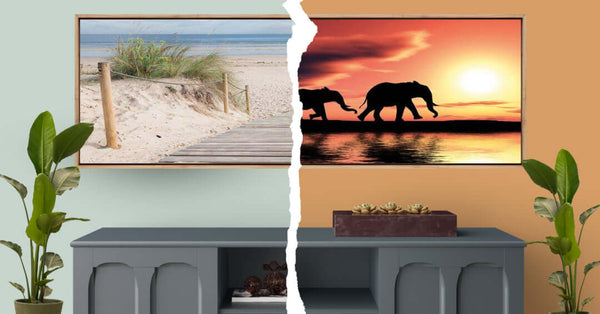Colour Theory: A Guide to Decorating Your Home
Colour plays a pivotal role in creating a harmonious and inviting atmosphere in your home. Understanding colour theory can help you make informed decisions when selecting paint, furnishings, and artwork. In this blog post, we'll explore the basics of colour theory and provide practical tips for incorporating colour into your home decor.

The Basics of Colour Theory
Colours can be classified into two categories: warm and cool. Warm colours, such as red, orange, and yellow, evoke feelings of energy, excitement, and passion. Cool colours, including blue, green, and purple, convey calmness, tranquility, and relaxation.
Colour Psychology
The psychological impact of colours can significantly influence the mood and atmosphere of a space. Here's a brief overview of how different colours can affect your emotions:
- Red: Stimulates appetite and creates a sense of excitement. However, too much red can be overwhelming.
- Orange: Associated with warmth, energy, and creativity. It's a popular choice for dining rooms and living spaces.
- Yellow: Evokes happiness, optimism, and clarity. It can brighten a room and create a cheerful ambiance.
- Green: Symbolizes nature, growth, and harmony. It's often used to create a relaxing and soothing atmosphere.
- Blue: Associated with peace, tranquility, and trust. It's a popular choice for bedrooms and bathrooms.
- Purple: Represents luxury, royalty, and creativity. It can add a touch of sophistication to a room.

Colour Schemes
When decorating your home, consider using different colour schemes to create a cohesive and visually appealing look. Here are some popular options:
- Monochromatic: This scheme uses different shades of the same colour. It's a simple yet elegant choice that can create a sense of harmony.
- Analogous: This scheme uses colours that are adjacent to each other on the colour wheel, such as blue, green, and yellow. It creates a harmonious and visually pleasing effect.
- Complementary: This scheme uses colours that are opposite each other on the color wheel, such as red and green. It creates a high-contrast and visually striking effect.
- Triadic: This scheme uses three colours that are evenly spaced on the colour wheel, such as red, yellow, and blue. It creates a bold and vibrant look.

Tips for Using Colour in Your Home Decor
- Start with a neutral base: Paint your walls a neutral colour like white, beige, or gray to create a versatile backdrop for your decor.
- Introduce color through accents: Add colour to your home through accessories like throw pillows, rugs, artwork, and plants.
- Consider the natural light: The amount of natural light in a room can affect how colours appear. Darker colours may appear more vibrant in a brightly lit room, while lighter colours may appear washed out.
- Balance warm and cool colours: A balanced combination of warm and cool colours can create a harmonious and visually appealing space.
- Don't be afraid to experiment: The best way to find a colour scheme that works for you is to experiment and have fun.
By understanding colour theory and applying these tips, you can create a home that is both beautiful and inviting.


